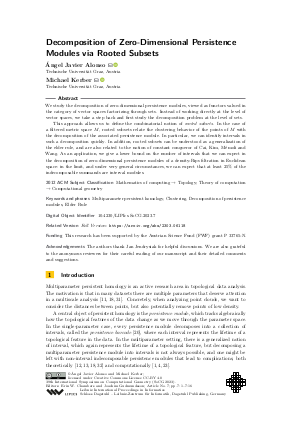LIPIcs.SoCG.2023.7.pdf
- Filesize: 0.83 MB
- 16 pages

 Creative Commons Attribution 4.0 International license
Creative Commons Attribution 4.0 International license

We study the decomposition of zero-dimensional persistence modules, viewed as functors valued in the category of vector spaces factorizing through sets. Instead of working directly at the level of vector spaces, we take a step back and first study the decomposition problem at the level of sets. This approach allows us to define the combinatorial notion of rooted subsets. In the case of a filtered metric space M, rooted subsets relate the clustering behavior of the points of M with the decomposition of the associated persistence module. In particular, we can identify intervals in such a decomposition quickly. In addition, rooted subsets can be understood as a generalization of the elder rule, and are also related to the notion of constant conqueror of Cai, Kim, Mémoli and Wang. As an application, we give a lower bound on the number of intervals that we can expect in the decomposition of zero-dimensional persistence modules of a density-Rips filtration in Euclidean space: in the limit, and under very general circumstances, we can expect that at least 25% of the indecomposable summands are interval modules.




Feedback for Dagstuhl Publishing